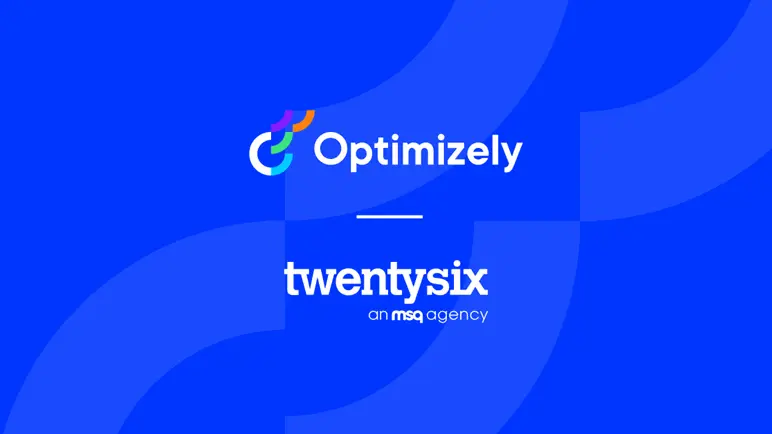How to deliver a successful web content strategy
Discover the main challenges businesses need to overcome to deliver a web content strategy that connects and engages with their target audience.

Lorna Foott

With the average person exposed to between 6,000 and 10,000 marketing messages every single day, it’s more important than ever that the content businesses produce is useful, personalized and highly relevant to the consumer.
So, how do you achieve this?
Success in today’s digital landscape requires a well-executed content strategy for your website that focuses just as much on the ‘why’ as the ‘what’.
Optimizely has collaborated with twentysix, one of the U.K.’s top digital agencies, to publish a whitepaper looking at the fundamental principles of web content and how to deliver a strategy that connects and converts.
The web content evolution
According to Microsoft’s CEO, two years’ worth of digital transformation occurred in just two months during the recent pandemic. As a society, we have changed the way we shop, work and connect, with more of this now being done remotely.
As a result, there is increased pressure on businesses to continue to understand the customer’s evolving needs, behaviors, and priorities to provide them with the relevant and useful content they’re searching for at every stage of their user journey.
Content is often underestimated, but done right, and it helps to communicate your organization’s vision, build brand awareness and help you stand out from the rest.
So, what do you need for a successful web content strategy?
Studies have shown that 95% of web users only read around 20% of the content on a site (1), which means the content you produce needs to work hard.
No one wants to spend time or energy producing numerous pages of similar content that only leads to frustration for the consumer and confusion for the search engines.
The whitepaper explores six points that companies must be clear on if they want to create relevant and useful content.
1. Is everyone in the organization agreed on your website’s purpose?
If the entire organization is unclear about the overall goal of your website, this will lead to ineffective content being produced. The whitepaper explores the simple questions businesses need to ask in order to create a transparent framework for everyone from which to work.
2. Do you understand your main audience?
We know that 70% of people find content on websites too general or irrelevant (2), and businesses that put time and energy into creating personalized content can outsell those who don’t by 30%. (3) Delivering content tailored to your audience is key in achieving success.
The whitepaper puts forward a clear strategy for collecting qualitative data about your main audience groups, including their interests, pain points and priorities, so you can deliver the content they need.
3. Which types of content does your website need?
Do your users engage more with blogs or videos? Understanding the type of content your main audience prefers helps you tailor the website to what they need. The whitepaper looks at analytical tools, such as ContentWRX and SEMrush, as well as Optimizely’s Content Intelligence product, that can help you analyze existing content to decide whether it should be kept, refreshed or deleted.
4. Do you have a clear workflow process?
The whitepaper emphasizes the importance of a strong content operations strategy to ensure everyone in the company knows who will be overseeing the editorial process to ensure it aligns with the brand personality and purpose.
5. Does your content deliver a great user experience?
The power of design, format and layout cannot be underestimated. Time and energy need to be given to how information is presented, such as the colors used on site, the spacing, the use of subheadings, and whether long or short-form copy would work best to deliver the optimal user experience.
6. Do you track performance?
Businesses need to know if the content they’re producing is performing well, otherwise it makes the content strategy almost pointless. The whitepaper looks at tools you can use to measure performance against key indicators, such as bounce rate, time on page and scroll depth.
For an in-depth look at how each of these challenges can be overcome, along with information on useful tools and technology available to create strategies that are fit for purpose, download the full whitepaper here
Sources
1) 11 Quick Tips For More Usable Content | UX Booth
2) The Content Advantage - Content Science (content-science.com)
